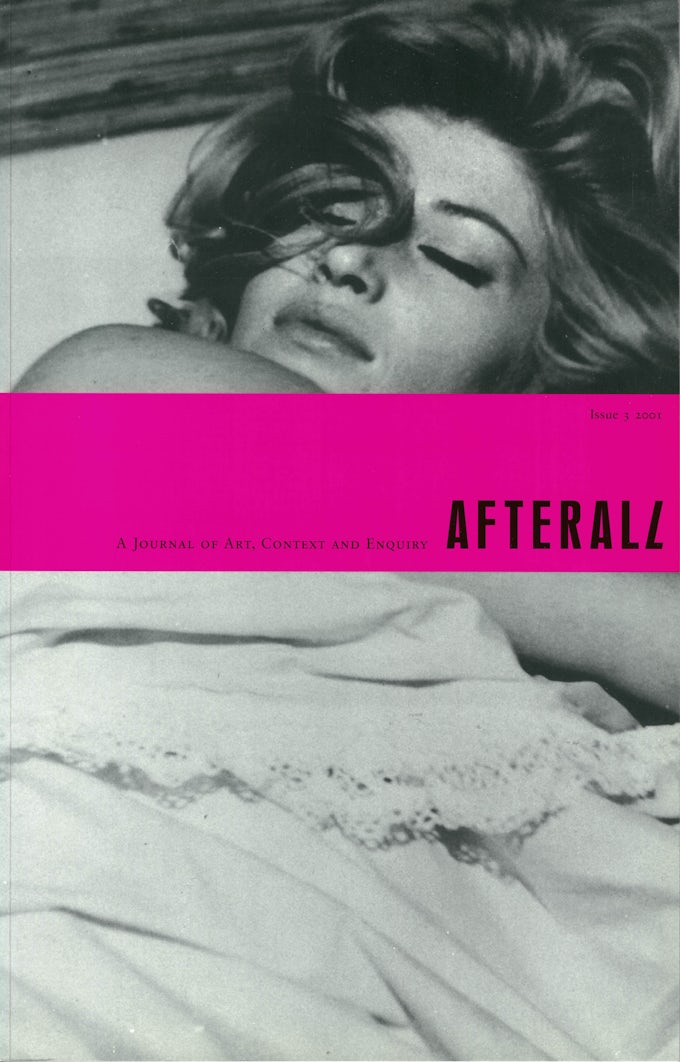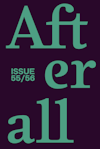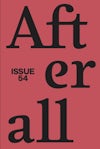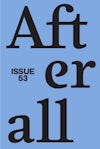
Issue 3
Spring/Summer 2001
Editors: Charles Esche, Mark Lewis, Silke Otto-Knapp.
Founding editors: Charles Esche, Mark Lewis.
Table of contents
Foreword
Contextual Essays
- A Conflict at the Very Heart of the Identification – Andreas Spiegl
- Performance as Metaphor – Bert O. States
Artists
Karen Kilimnik
- What Do You Know About My Image Duplicator – Caoimhín Mac Giolla Leigh
- The Good Enough – Barbara Steiner
Michelangelo Antonioni
- Michelangelo Antonioni: Three Landscapes – Michael Tarantino
- Caro Antonioni – Peter Wollen
Hilary Lloyd
- TV Eye on You: On the Video-Works of Hilary Lloyd – Jan Verwoert
- Hilary Lloyd: The Work of Time – David Bussel
Uri Tzaig
- The Counterpointed Medium (and the Amorous Twin). On the Recent Works of Uri Tzaig – Sarit Shapira
- Reims by the Banks of the Dead Sea – Pierre Leguillon
Foreword
Written by Charles Esche
In his book The Play of Nature: Experimentation as Performance, Robert Crease examines the similarities between scientific and artistic processes and concludes that they are essentially similar in their performative aspect…
In his book The Play of Nature: Experimentation as Performance, Robert Crease examines the similarities between scientific and artistic processes and concludes that they are essentially similar in their performative aspect. Judith Butler suggests that gender is also a performative act, one that is played out by each of us as individuals in the public space. Meanwhile, certain readings of Hannah Arendt claim that the body is constructed in performance and is therefore politically charged in the ‘social’ sphere that Arendt sees as the middle ground between the public and private realms. All these theorists seem to point towards an expansion of the idea of performance and performativity out of the theatrical and into social conditions. This liberation of performance from the formality of the proscenium arch stage has been grasped by an, increasing number of artists as a renewed site for experimentation. Interestingly, this work has mostly been carried out under the nominal title of visual art, an indication perhaps of the permissive territory of the visual in relation to other traditional art forms. As much as the ‘death of painting’ continues to muddy the waters of contemporary art practice, it is in reality this permissive attitude to media and forms of producing and presenting that has energised art over the past twenty years.
In terms of the practice and theoretical discussions around art, it has been the (sometimes literal) introduction of the body of the artist or writer into his/her work that has effectively challenged the formalist artwork and objective criticism that preceded it. The steady expansion of the idea of performance has been a response to the increasingly persuasive view that the world is in some measure created by the conscious individual through a limited, subjective and active engagement with external reality. The human subject then becomes a ‘site-in-time’ that both projects meaning and has readings placed upon it. Performance permits these contingencies to be made apparent in the duration, immediacy and the context of the artist and audience in a shared space that may or may not be transformed into a stage.
Purchase
The publication is available for purchase. If you would like specific articles only, it is also available individually and to be downloaded as PDFs.
Purchase full publication
Buy via University of Chicago Press
Buy via Central Books
Purchase individual articles
Buy via University of Chicago Press



